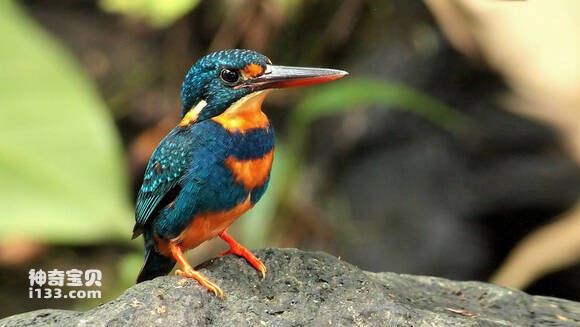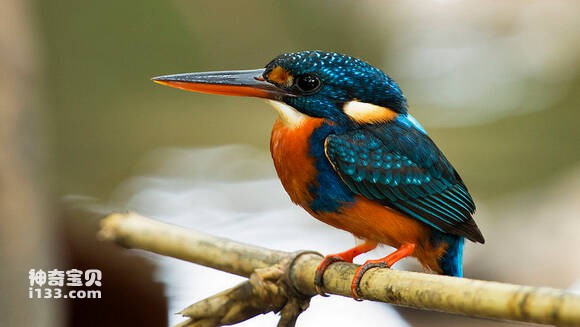Alcedo cyanopecta
IUCN
LCBasic Information
Scientific classification
- name:Alcedo cyanopecta
- Scientific Name:Alcedo cyanopecta,Dwarf River Kingfisher
- Outline:Climbing birds
- Family:
Vital signs
- length:About 14 cm
- Weight:No textual research information is available
- lifetime:No textual research information is available
Feature
The head, back, and wings are a dark sapphire blue with black spots and stripes
Distribution and Habitat
The blue-brewed kingfisher is found in Luzon, Polynesia, Panai, Negros and Cebu.
Blue-breasted kingfishers live in brush or open forest, clear and slow-flowing rivers, streams, lakes, and irrigation canals.
Appearance
The blue-breasted kingfisher is a small kingfisher with a body length of 14 cm. The head, back, and wings are a dark sapphire blue with black spots and stripes. The lower body is orange yellow, the chest is blue, and there are orange patches on both sides of the neck. Eye first, beak, leg claws orange red. Mouth thick straight, long and firm, mouth ridge round; No nasal furrow; The wingtip is long, the first primary feathers are slightly shorter, and the third and fourth feathers are longest; Tail short round; The body feathers are showy and luminous, often blue or green. The head is large, the neck is short, the wings are short and round, and the tail is mostly short; The mouth is long and pointed, the rostrum is round and blunt, the feet are very short, the toes are thin and weak, the fourth and third toes are mostly connected, and the second toe is only connected at the base. Caudal lipid gland quilt (Ranyu). There are black coracoid bones on both sides, 4 nicks on the posterior mar
Details
Alcedo cyanopecta, Dwarf River Kingfisher, has 2 subspecies (1. cyanopectus cyanopectus is found in Luzon, Polynesia, and the Philippines. 2. Alcedo cyanopecta nigrirostris, a dark subspecies of the blue-brested kingfisher, is found in Panai, Negros and Cebu in the Philippines.) .

The blue-breasted kingfisher is solitary, usually living alone on the branches or rocks near the water, waiting for the opportunity to hunt, mainly to eat small fish, and eat crustaceans and a variety of aquatic insects and larvae, but also pecking at small frogs and a small number of aquatic plants. When a kingfisher plunges into the water, it can also maintain excellent vision because its eyes can quickly adjust the contrast in the Angle of view caused by the light in the water. So the fishing ability is very strong.

Blue-breasted kingfishers generally nest on earth cliffs or in the dikes of fields and streams, using their mouths to dig tunnle-like burrows, which are generally unfoiled. The eggs are laid directly on the nest ground. Each clutch lays 6-7 eggs. Egg color pure white, bright, slightly spotted, about 28 mm ×18 mm in size, 1-2 broods per year; The incubation period is about 21 days, and the eggs are incubated by both sexes, but only fed by the female.
Listed on the International Union for Conservation of Nature (IUCN) 2013 Red List of Threatened Species ver 3.1 - Low Risk (LC).
Protect wild animals and eliminate wild meat.
Maintaining ecological balance is everyone's responsibility!








